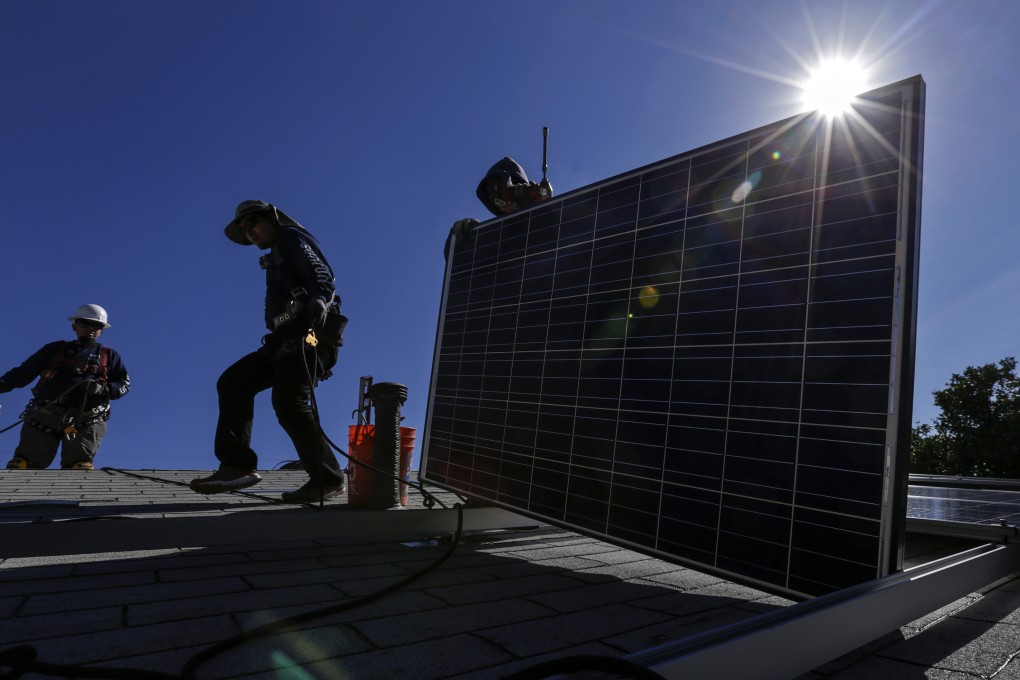How Singapore’s solar power push, using floating farms and vertical panels, offers solutions to other cities
- Singapore’s clean-energy campaign could make it a ‘living laboratory’ to provide ideas for other cities around the world
- Elsewhere in Asia, Japan and South Korea have pledged to achieve carbon neutrality by 2050, and China by 2060

With renewable energy options such as wind, hydro, nuclear and biomass ruled out, solar photovoltaic (PV) is the most viable option for Singapore, despite limited land for large-scale farms, and challenges such as frequent cloud cover.
Last month, Singapore inaugurated a 5 megawatt offshore floating PV system on the Johor Strait, part of its goal to install at least 2 gigawatt of solar power by 2030 – five times current capacity – and halving its carbon emissions by 2050.
“Compared to bigger countries … we do not have the natural resources, land area and climatic conditions for the large-scale deployment of renewable energy sources,” said Lawrence Wong, minister for education.
This makes it extremely hard for the Southeast Asian nation to cut its planet-heating emissions to net zero, said Wong, adding that its clean-energy push could make it a “living laboratory” to provide ideas for other cities around the world.
Renewable sources are forecast to supply about 40 per cent of the world’s electricity supply in 2030, with hydropower making up about half that output, followed by wind and solar.